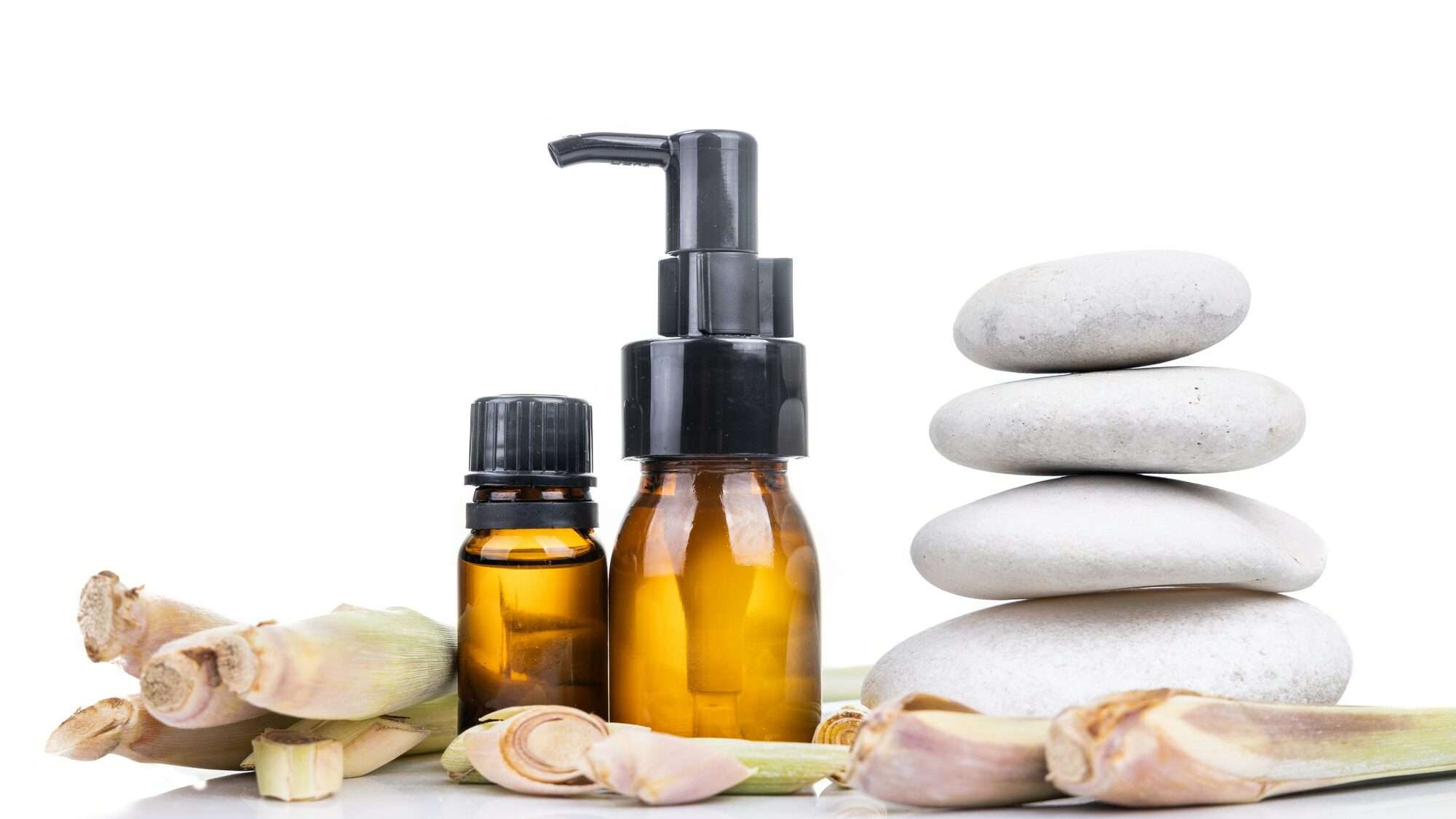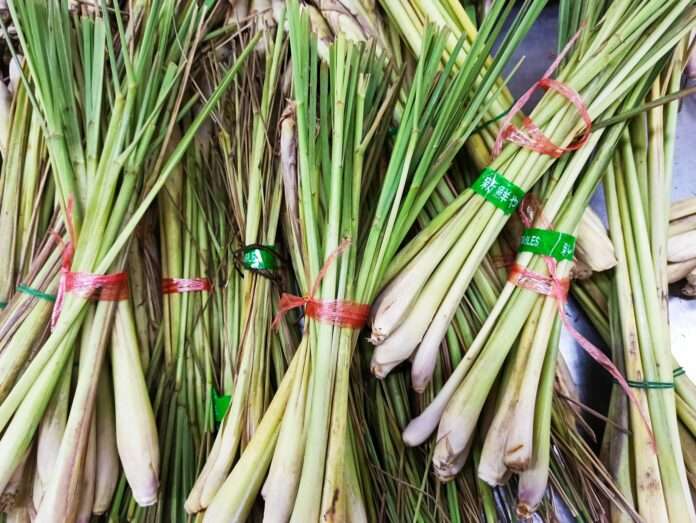Lemongrass, a tropical perennial plant renowned for its aromatic oil, contributes significantly to global production. Annually, approximately 1000 tonnes of lemongrass oil are extracted from an expansive area of 16000 hectares worldwide. In India alone, the cultivation spans about 4000 hectares, yielding an annual production of around 250 tonnes. Notably, lemongrass stands out as a climate-resilient crop, capable of withstanding extreme weather variabilities, thanks to its well-ramified root system that aids in soil and water conservation.
The commercial cultivation of lemongrass primarily centers around its aromatic oil, rich in citral, imparting a lemon-like fragrance and earning the plant its common name. The oil content in lemongrass averages 0.29% and 0.63% on fresh and dry weight bases, respectively. Extracted through steam distillation, this aromatic oil finds versatile applications in the cosmetic industry, perfumes, soaps, and detergents. Additionally, it serves medicinal purposes as herbal tea, offering indigenous farmers a lucrative income source through the cultivation of these aromatic grasses.
Table of Contents
Dried lemongrass leaves play a pivotal role in herbal teas, providing a lemony flavor when decocted or infused in water. Lemongrass tea, known for its diuretic properties, brings a refreshing twist without introducing biochemical changes to the body, distinguishing it from ordinary tea. For a delightful iced tea variation, lemongrass stalks are steeped in boiling water, and the infusion can be combined with green or black teas.
In the realm of culinary exploration, lemongrass has become a household name, particularly in Asian cookery. Its fragrant profile lends itself to various applications beyond traditional dishes. From creating a simple syrup infused with lemongrass for enhancing fruit salads to concocting homemade sodas by mixing it with seltzer, lemongrass proves its versatility. A blend of lemongrass, garlic, ginger, and oil, when frozen, transforms into a stable paste. This aromatic concoction can be fried until fragrant and then simmered with coconut milk to craft a delicious sauce for noodles, vegetables, or seafood dishes.
The culinary journey continues with lemongrass oil finding its place in various food categories, such as alcoholic and non-alcoholic beverages, frozen dairy desserts, candies, baked goods, gelatines, puddings, meats, and oils. Its capacity to enhance the flavor of fish, wines, sauces, and more adds to its culinary allure. Moreover, lemongrass oleoresin plays a key role in flavoring a diverse range of foods, drinks, and bakery preparations.
In essence, lemongrass emerges as a botanical treasure, weaving its aromatic tapestry across industries and culinary landscapes, showcasing its resilience, versatility, and economic significance.
Overview of Species, Varieties, and Cultivation of Lemongrass

Species and Varieties
Lemongrass, a member of the Graminae (Poaceae) family and the Cymbopogon genus, encompasses three primary species. Cymbopogon flexuosus, also known as East Indian, Cochin, or Malabar grass, is a robust perennial grass reaching approximately 2 meters in height. Within this species, two distinct varieties are identified based on stem color.
- C. flexuosus var. flexuosus: Recognized as true lemongrass, it is commercially cultivated and characterized by a reddish or purple stem and leaf sheath. The essential oil from this variety boasts over 75-80% citral, making it of superior quality, especially due to its excellent solubility in alcohol.
- C. flexuosus var. albescens: This white grass has a white-colored stem and is typically found in the wild. However, its essential oil contains less than 65-70% citral, displaying poorer alcohol solubility and is considered inferior in quality.
Additionally, other varieties such as Cymbopogon citratus (West Indian or American lemongrass) and Cymbopogon pendulus (Jammu lemongrass) contribute to the diversity of this plant.
Origin and Distribution
Lemongrass is widely distributed across Africa, the Indian subcontinent, South America, Australia, Europe, and North America. In India, it grows both wild and cultivated, with specific species being endemic to the region. East Indian Lemongrass, for example, is cultivated in various states such as Kerala, Assam, Maharashtra, and Uttar Pradesh. The plant’s adaptability is demonstrated by its distribution in Guatemala and China.
Cultivation
Cultivating lemongrass requires careful consideration of factors such as soil quality, climate, and planting techniques. Optimal growth occurs in well-drained, fertile soil with a pH of around 6.0 and an altitude ranging from 150 to 700 meters. While lemongrass traditionally thrives in high rainfall areas, it can also be cultivated under semi-arid tropical conditions with irrigation.
Land Preparation and Plantation:
Land preparation involves ploughing, discing, and termite treatment, ensuring the soil is conducive to plant growth. Plantation, which lasts 4 to 5 years, involves the use of clumps called “slips,” obtained by dividing old plantations. Careful planting techniques and spacing, ranging from 45×45 cm to 90×90 cm, contribute to successful cultivation.
Manures, Irrigation, Diseases, and Pests:
Lemongrass, being a nutrient-demanding crop, benefits from organic manures and fertilizers. Regular irrigation is crucial for its growth, particularly in sub-tropical areas. The plant is susceptible to diseases such as blight leaf and anthracnose, caused by specific organisms.
Harvesting and Oil Distillation:
Harvesting occurs at intervals of 3-4 months, beginning four to five months after plantation. The leaves, containing aromatic oil, are then distilled using methods such as steam distillation or water distillation. The oil content varies depending on factors such as climate, cultivation method, and harvesting season.
Also read: Napier Grass: A Sustainable Solution for Agriculture and Environment
Applications of Lemon Oil in Various Industries

Lemon oil, with its refreshing and invigorating fragrance, finds widespread use in both the perfume industry and a variety of household products. Its versatile nature allows for direct and indirect applications in several sectors, contributing to the creation of diverse consumer goods.
1. Perfume Industry: Lemon oil plays a significant role in the perfume industry, contributing to the formulation of fragrances for various products. Its fresh and citrusy notes enhance the olfactory profile of perfumes, making it a popular choice for both men’s and women’s scents.
2. Household Products: The antimicrobial and antibacterial properties of lemon oil make it a valuable ingredient in household items such as soaps, detergents, and household cleaners. Its pleasant scent not only adds to the product’s appeal but also imparts a sense of cleanliness.
3. Mosquito Cream and Agarbatti: Lemon oil is utilized in the production of mosquito creams and Agarbatti (incense sticks), contributing both to the fragrance and potential insect-repelling properties of these products.
4. Tea Blending: In the realm of tea blending, lemon oil serves as an aromatic component, enhancing the flavor profile of teas. Its citrus notes add a refreshing twist to various tea blends.
5. Medicinal and Therapeutic Uses: Lemon oil has proven medicinal properties, serving as a raw material for isolates such as Geraniol and Citronellol. It contains â-ionone, a precursor of Vitamin B12, and exhibits antibiotic and anti-flatulent characteristics. Additionally, citronella oil, derived from lemongrass, is utilized in cough syrups to alleviate muscle fatigue and aid in wound healing. The oil’s aromatherapeutic and medicinal benefits make it a sought-after ingredient in various healthcare products.
6. Aromatherapy: Lemon oil is a popular choice in aromatherapy due to its uplifting and calming properties. Its inclusion in essential oil blends contributes to a positive and invigorating atmosphere, promoting relaxation and mental well-being.
7. Citral in Consumer Goods: Citral, a major component of lemon oil, is widely used in the formulation of soaps, perfumes, detergents, cosmetics, and candles. Products with a fresh lime fragrance often incorporate citral for its distinctive and pleasant aroma.
It is important to note that while lemongrass oil has bactericidal properties and is generally unrestricted in flavors and fragrances, specific guidelines, such as those from the International Fragrance Association (IFRA), may impose limitations on the use of individual components like citral. Despite such restrictions, the versatile applications of lemon oil continue to make it a valuable ingredient in a wide array of consumer goods.
Government Initiatives and the Path Forward in Lemongrass Cultivation

The Odisha Government has taken significant strides in supporting tribal women involved in lemongrass cultivation, providing a boost to their economic independence. In the Koraput district, eight oil extraction units have been established in Bandhugaon and Narayanpatana blocks. This initiative aims to empower tribal women, who cultivate lemongrass on approximately 3,000 hectares, producing up to 50 kg of oil per hectare.
The lack of oil extraction units had previously left these women vulnerable to exploitation by private traders, impacting their sale prices. To rectify this, the Koraput administration is funding six units in Bandhugaon and two in Narayanpatana blocks, each costing Rs 6.50 lakh. This financial support, facilitated through various government schemes, is expected to directly benefit 350 tribal women farmers. The establishment of these units will reduce transportation charges, save time, and minimize labor, empowering the women economically.
Moreover, the Tribal Development Cooperative Corporation (TDCC) of Koraput has stepped in to market lemongrass oil processed by these groups. This move ensures that the tribal producers receive fair pricing for their produce. Under the TDCC’s intervention, the farmers were able to sell their oil at Rs 1,350 per kg, a significant increase from the previous Rs 650 per kg.
In another initiative led by the Aditya Birla Group Company, Utkal Alumina, lemongrass cultivation has been actively promoted in Andirakanch village of Kashipur Block, Rayagada. Aimed at providing an alternative income source to local farmers, the project spans 20 acres, involving 12 farmers.
Through training programs and exposure visits, Utkal Alumina has supported the farmers in cultivating lemongrass on an experimental basis. The company provided essential resources, and the Odisha Agro Industries Corporation contributed to the setting up of micro lift irrigation infrastructure.
The success of this endeavor is evident as the farmers have already harvested the first crop and extracted oil. Plans are underway to establish a lemongrass oil extraction unit in the locality, with an expansion of the farming area to another 100 acres. These efforts are expected to improve the socio-economic status of the farmers and enhance their overall quality of life.
Additionally, in Sonepur district, lemongrass plantation has been introduced as a novel initiative for employment generation and poverty reduction. The administration has allocated 100 acres of barren land, identifying 47 farmers for the project. By addressing the challenges related to agriculture in the district, such as lack of inputs, technology, and support services, the lemongrass plantation aims to uplift the livelihoods of small and marginal farmers.
Similarly, in Mayurbhanj district, a sexagenarian farmer, Jitendranath Murmu, has demonstrated the potential of lemon grass cultivation for self-employment. His processing plant extracts oil from lemon grass, providing income not only to him but also employment opportunities for 25 families. Inspired by his success, the government has allocated Rs 22 lakh under MGNREGS to nine farmers to purchase lemon grass saplings.
As these initiatives unfold, there is a clear need for continued government support and incentives to encourage more farmers to take up lemongrass cultivation. Technical training, marketing facilities, and financial assistance should be extended to interested farmers.
Furthermore, the State Livelihoods Mission and other conservation programs should support lemongrass plantations, and Public-Private Partnerships (PPP) need to be promoted to ensure sustained growth in this sector. The government’s proactive involvement will play a crucial role in harnessing the full potential of lemongrass cultivation for economic development and improved livelihoods.
Also read:


